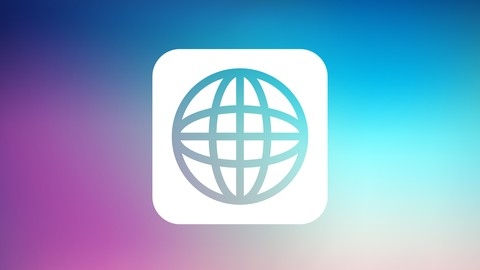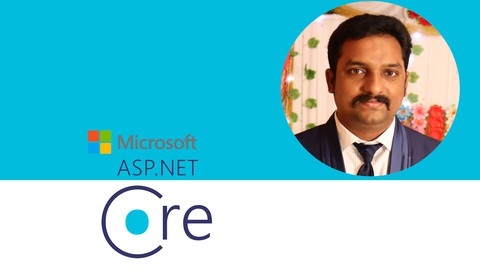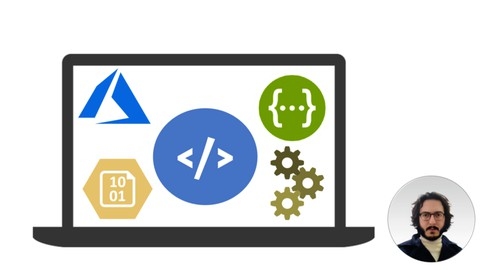The Complete ASP.NET MVC 5 Course
The course starts by introducing the MVC architectural pattern and setting up your development environment.
You’ll build your first MVC app, learning about models, views, controllers, routing, and theming.
This lays the foundation for understanding the core concepts.
From there, it dives into more advanced topics like working with data using Entity Framework, building forms, implementing validation, and securing your app with authentication and authorization using ASP.NET Identity.
You’ll learn techniques for optimizing performance across the application tiers.
A major portion is dedicated to building RESTful APIs with ASP.NET Web API, including data transfer objects, AutoMapper, and JSON formatting.
On the client-side, you’ll use jQuery to call these APIs, displaying data in tables and implementing AJAX functionality.
The course walks you through building a complete video rental application feature step-by-step, covering domain modeling, API design, front-end development with autocompletion and data binding.
You’ll implement real-world requirements like checking movie availability and handling edge cases.
Finally, it covers deployment to different environments, managing application settings, error handling, and logging.
Build an app with ASPNET Core and Angular from scratch
You’ll start by setting up the development environment, including Visual Studio Code and the .NET CLI.
The course dives into building the backend API with ASP.NET Core, covering essential concepts like entities, Entity Framework, database migrations, and asynchronous code.
You’ll learn to create API controllers, handle HTTP requests, and integrate source control using Git.
Moving to the frontend, you’ll build an Angular application, fetching data from the API and displaying it in the browser.
The course covers Angular fundamentals, including components, services, observables, and routing.
You’ll also learn to enhance the UI with Bootstrap and Font Awesome.
Authentication is a crucial aspect covered in-depth, including safe password storage, JSON Web Tokens (JWT), and authentication middleware.
You’ll build login and register functionality on both the client and server sides.
As you progress, you’ll explore advanced topics like reactive forms, client-side validation, paging, sorting, filtering, and error handling.
The course also covers photo upload functionality using Cloudinary, a cloud-based image management service.
The messaging feature introduces you to SignalR, a real-time communication library, enabling you to build a chat application with real-time updates.
You’ll also learn about identity and role management, allowing you to implement user roles and authorization policies.
Towards the end, the course covers performance optimization techniques, including the Unit of Work pattern and query optimization.
Finally, you’ll learn how to publish your application to various hosting platforms like Fly.io and Heroku, including containerization with Docker.
The course keeps up with the latest versions of the technologies, providing updates for .NET 6/7, Angular 12/14, and Bootstrap 5.
.NET Core MVC - The Complete Guide 2023 [E-commerce] [.NET8]
You’ll start by setting up your development environment and creating a new .NET Core MVC project.
The course covers the fundamentals of MVC architecture, routing, and dependency injection, ensuring you have a solid grasp of the core concepts.
The real fun begins with implementing CRUD (Create, Read, Update, Delete) operations for categories and products.
You’ll learn how to work with Entity Framework Core, create data models, handle server-side and client-side validations, and design user interfaces using Bootstrap.
As you progress, the course dives into more advanced topics like implementing the Repository Pattern and Unit of Work, which promotes code reusability and maintainability.
You’ll also explore areas in .NET, allowing you to organize your application’s functionality into logical modules.
The course covers user authentication and authorization using ASP.NET Core Identity, including registering users, creating roles, and securing specific areas of your application based on user roles.
Building an e-commerce application wouldn’t be complete without a shopping cart implementation.
You’ll learn how to add products to the cart, update quantities, and calculate order totals dynamically.
When it’s time to place an order, the course guides you through integrating with Stripe for secure online payments.
You’ll also implement order management features, allowing users to view their order history and update order statuses.
Throughout the course, you’ll explore advanced concepts like view components, social logins (Facebook, Microsoft), and session management.
The deployment process is covered in detail, including setting up a production database, configuring SendGrid for email notifications, and deploying your application to Azure.
User management is another crucial aspect covered, where you’ll learn how to display user lists, manage user roles, and lock/unlock user accounts.
The course even delves into handling multiple product images, utilizing techniques like file uploads and carousels for an enhanced user experience.
Build a Real-world App with ASP.NET Core and Angular 2 (4+)
The course starts by setting up the development environment, including installing SQL Server and creating a new ASP.NET Core project.
You’ll learn about the project structure, application startup, and working with Git for version control.
Next, you’ll dive into building APIs using ASP.NET Core.
You’ll create a domain model, add Entity Framework Core for database access, and learn how to seed the database.
The course covers building APIs, handling runtime errors, and using AutoMapper for object mapping.
Once the API is in place, you’ll move to the front-end and learn how to build forms with Angular and Bootstrap.
You’ll create Angular components, routes, and services, and work with various form elements like drop-down lists, checkboxes, radio buttons, and text boxes.
The course then focuses on implementing CRUD (Create, Read, Update, Delete) operations.
You’ll extend the domain model, deal with many-to-many relationships, and build APIs for creating, updating, deleting, and retrieving objects.
You’ll also learn about server-side validation and mapping API resources to domain classes.
To improve the code structure, the course covers refactoring towards the Clean Architecture.
You’ll separate API resources, decouple from Entity Framework, and implement the Repository and Unit of Work patterns.
The course also discusses the Dependency Inversion Principle and the differences between layers and tiers.
With the foundation in place, you’ll learn how to populate and submit forms in Angular.
You’ll bind form elements to the model, implement client-side validation, display notifications, handle errors, and implement editing, deleting, and parallel requests.
The course then covers filtering, sorting, and pagination on both the client and server sides.
You’ll learn how to pass filter and sort parameters to the server, render columns dynamically, and implement paging with a pagination component.
File uploading is also covered, where you’ll extend the domain model, build APIs for uploading files, and implement file upload on the client-side with progress tracking and error handling.
Authentication and authorization are crucial aspects of any real-world application, and the course covers setting up an Auth0 account, securing APIs and client apps, implementing login and logout, handling user profiles and roles, and restricting access based on roles.
Finally, the course includes additional improvements like adding charts, optimizing queries, fixing bugs, extracting a service layer, supporting multiple storages, and using the Secret Manager.
Throughout the course, you’ll work with modern technologies like ASP.NET Core, Entity Framework Core, Angular, Bootstrap, and Auth0.
The hands-on approach ensures you gain practical experience in building real-world applications from start to finish.
Build ASP.NET Core Web API - Scratch To Finish (.NET8 API)
This course provides a comprehensive guide to building ASP.NET Core Web APIs from scratch using .NET 8.
You’ll start by setting up your development environment, including installing Visual Studio 2022, .NET SDK, and SQL Server Management Studio.
The course begins by introducing you to the fundamentals of ASP.NET Core Web APIs, REST principles, and HTTP verbs.
You’ll learn how to create a new Web API project, understand its file structure, and run it locally.
Next, you’ll dive into domain modeling and create domain models using Entity Framework Core.
You’ll learn how to set up a database context, configure the connection string, and run EF Core migrations to create the database.
With the foundation in place, you’ll create your first controller and implement CRUD operations for regions.
You’ll explore Data Transfer Objects (DTOs) and use AutoMapper to map between domain models and DTOs.
The course then covers asynchronous programming and the repository pattern, teaching you how to implement these concepts in your Web API.
Moving forward, you’ll build functionality for managing walks, including creating, reading, updating, and deleting walks.
You’ll also learn about seeding data and handling navigation properties in Entity Framework Core.
Model validations are covered in detail, including built-in validations, custom validations, and using Fluent Validations for more complex scenarios.
The course then dives into filtering, sorting, and pagination, enabling you to build robust APIs that can handle large datasets efficiently.
Security is a crucial aspect of Web APIs, and you’ll learn how to secure your API using authentication and authorization with JWT tokens.
You’ll implement role-based authorization and secure your Swagger documentation.
Image upload functionality is also covered, allowing you to upload images to a local file storage and serve them through the API.
Advanced topics like logging, global exception handling, and versioning are explored, equipping you with the skills to build production-ready APIs.
Finally, you’ll learn how to consume your Web API from an ASP.NET MVC application, covering GET, POST, PUT, and DELETE operations.
The course concludes with a section on deploying your Web API to Azure.
Throughout the course, you’ll work with real-world examples and build a complete Web API project from scratch, solidifying your understanding of ASP.NET Core Web APIs and .NET 8.
Asp.Net Core 8 (.NET 8) | True Ultimate Guide
The course starts by introducing you to ASP.NET Core and its evolution from WebForms and MVC.
You’ll learn about the new features in .NET 8 and set up your development environment.
Next, you’ll dive into the fundamentals of HTTP, understanding responses, status codes, headers, and working with tools like Postman.
The course covers middleware in-depth, teaching you how to create custom middleware classes and extensions.
Routing is a crucial aspect, and you’ll learn about route parameters, constraints, and endpoint selection order.
The course then moves on to controllers and the different types of action results, like JsonResult and RedirectResult.
Model binding and validations are covered extensively, including form data handling, custom validations, and model binders.
You’ll also learn about Razor views, layout views, partial views, and view components, which are essential for building user interfaces.
Dependency injection is a core concept in ASP.NET Core, and the course teaches you about services, scopes, and best practices.
You’ll explore environments, configuration, and the options pattern for managing settings.
A significant portion of the course is dedicated to building a Contacts Manager application using xUnit for unit testing.
You’ll learn test-driven development, mocking with Moq, and the repository pattern.
The application covers CRUD operations, tag helpers, and integrating with Entity Framework Core.
The course also covers advanced topics like logging with Serilog, filters, error handling, SOLID principles, and clean architecture.
You’ll learn about identity, authorization, and security, including JWT authentication for Web APIs.
Additionally, you’ll work with Swagger/OpenAPI for documenting APIs, Angular for building client-side applications, and CORS configuration.
The course even introduces you to the new Minimal API feature in ASP.NET Core 8.
Throughout the course, you’ll work with modern C# features like extension methods, lambda expressions, LINQ, and nullable reference types.
The instructor provides cheat sheets and source code to reinforce your learning.
Asp.Net MVC 5 - Ultimate Guide - In depth & Sample Project
This course starts by covering the fundamentals of ASP.NET MVC, including its architecture, controllers, and action methods.
You’ll learn how to create your first MVC application using Visual Studio.
The course then dives into core concepts like ActionResult, the Razor view engine, HTTP methods, shared views, layout views, and partial views.
You’ll explore conventional and attribute-based URL routing, working with models, and strongly-typed views.
As you progress, you’ll learn model binding, form handling, and validations.
The course covers Entity Framework’s database-first and code-first approaches, allowing you to interact with databases efficiently.
It also covers essential topics like HTML helpers, ASP.NET Identity for authentication and authorization, filters (including built-in and custom filters), security measures like preventing CSRF attacks, and exception handling.
The course introduces design patterns like the Service Pattern and Repository Pattern, along with state management techniques like ViewData, ViewBag, and TempData.
You’ll learn to work with AJAX and Web API, enabling you to build modern, responsive applications.
Performance optimization techniques like bundling and minification are also covered.
The course includes a comprehensive sample project - a StackOverflow clone - where you’ll apply the concepts learned throughout the course.
Rest Api’s in Asp.Net Core and C# 2024 Edition
The course starts by setting up the development environment, guiding you through installing essential tools like Visual Studio and Postman.
You’ll then understand the fundamentals of RESTful APIs, including what an API is, HTTP verbs, and how to create a basic REST API project in ASP.NET Core.
From there, you’ll learn to create models, controllers, and handle CRUD operations (Create, Read, Update, Delete) using ASP.NET Core.
This hands-on approach ensures you grasp the core concepts of building REST APIs.
The course dives deep into integrating your API with a Microsoft SQL database using Entity Framework Core.
You’ll explore code-first and database-first approaches, configure NuGet packages, work with DbContext, connection strings, and handle database operations like migrations and seeding data.
Error handling and HTTP status codes are crucial aspects covered in detail, ensuring you can build robust and reliable APIs.
You’ll also learn about asynchronous programming and why it’s essential for efficient API development.
As you progress, you’ll implement advanced features like content negotiation, file uploading with Azure Blob Storage, validations, and routing.
These real-world scenarios will prepare you for building production-ready APIs.
The course culminates with a comprehensive project where you’ll build a REST API for managing artists, albums, and songs.
You’ll implement pagination, search functionality, and explore deployment options like Microsoft Azure, IIS, and even integrate with PostgreSQL databases.
Throughout the course, you’ll work with modern tools and technologies like Visual Studio, Postman, NuGet packages, and Azure services.
The instructor’s clear explanations and hands-on approach ensure you gain practical experience and confidence in building REST APIs with ASP.NET Core and C#.
Master ASP.NET MVC Core 3.1
This syllabus covers a comprehensive range of topics, taking you from the fundamentals to advanced concepts and real-world projects.
You’ll start by learning the basics of ASP.NET Core, including Razor Pages, routing, tag helpers, and middleware.
The course also emphasizes security best practices, covering SQL injection, cross-site scripting, and cross-site request forgery prevention.
As you progress, you’ll dive into two major projects: Book List Razor and Spice.
The Book List Razor project introduces you to the runtime Razor package, creating models, database integration, and implementing CRUD operations.
The Spice project takes a deeper dive into MVC architecture, areas, routing, and scaffolding Identity.
From there, the course covers essential topics like categories, sub-categories, menu items, coupons, and a landing page.
You’ll learn to work with models, controllers, views, and view models, as well as implement features like TinyMCE for rich text editing.
The syllabus also includes user registration, shopping cart functionality, order management, and order pickup processes.
You’ll integrate third-party services like Stripe for payment processing and explore social logins with Facebook integration.
Additionally, the course covers email integration using SendGrid, deployment strategies for Azure, MyWindowsHosting, and IIS, and database seeding techniques.
Throughout the course, you’ll work with Entity Framework, APIs, NuGet packages, dependency injection, and debugging techniques.
The projects involve implementing features like upsert operations, client-side validations, DataTables, and paging.
Asp.Net Core : The Complete Guide To Build RESTful Api’s
This course provides a comprehensive guide to building RESTful APIs using Asp.Net Core and Entity Framework.
You’ll start by learning the fundamentals of APIs, HTTP verbs, and the MVC architecture.
The course then dives into creating your first RESTful API, covering CRUD operations (Create, Read, Update, Delete) and working with data models.
You’ll integrate with an MS SQL database using Entity Framework Core, implementing code-first migrations and handling database operations.
As you progress, you’ll learn essential concepts like error handling, status codes, content negotiation, model validation, and routing.
The course covers implementing sorting, paging, and searching functionalities to enhance your APIs.
You’ll also explore caching techniques to improve performance and learn about authentication and authorization using Microsoft Identity and JSON Web Tokens (JWT).
The course guides you through deploying your APIs to Microsoft Azure and third-party hosting providers.
To solidify your learning, you’ll build a real-world project: a Coffee Shop REST API.
This hands-on experience will help you understand the relationships between entities and implement various controllers and methods.
Throughout the course, you’ll work with modern tools like Visual Studio, SQL Server, and Azure, ensuring you’re prepared for real-world development scenarios.
By the end, you’ll have the skills to build robust, secure, and scalable RESTful APIs using Asp.Net Core and Entity Framework.
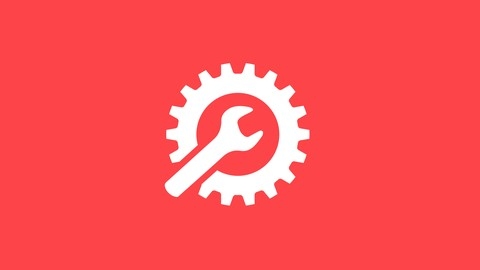

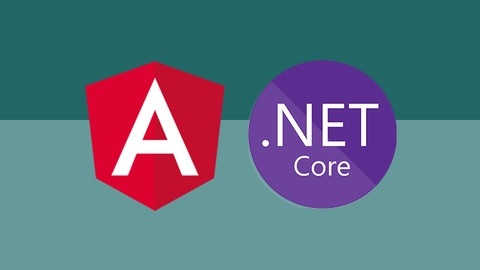
![.NET Core MVC - The Complete Guide 2023 [E-commerce] [.NET8]](/img/best-asp-net-courses-udemy/1844356_NETCoreMVC-TheCompleteGuide2023E-commerceNET8.jpg)
